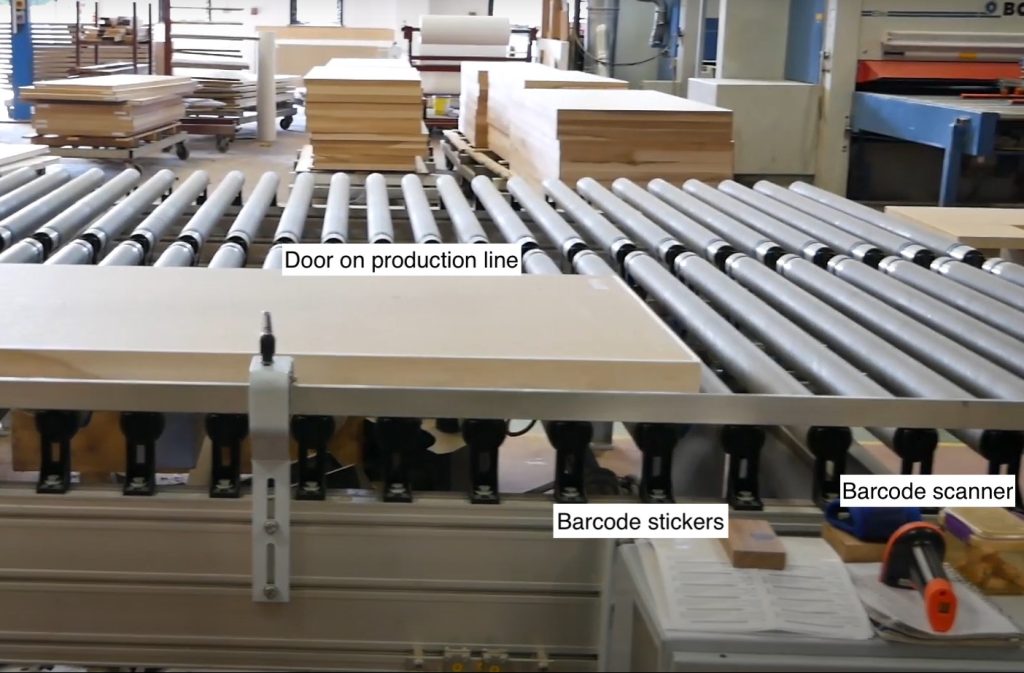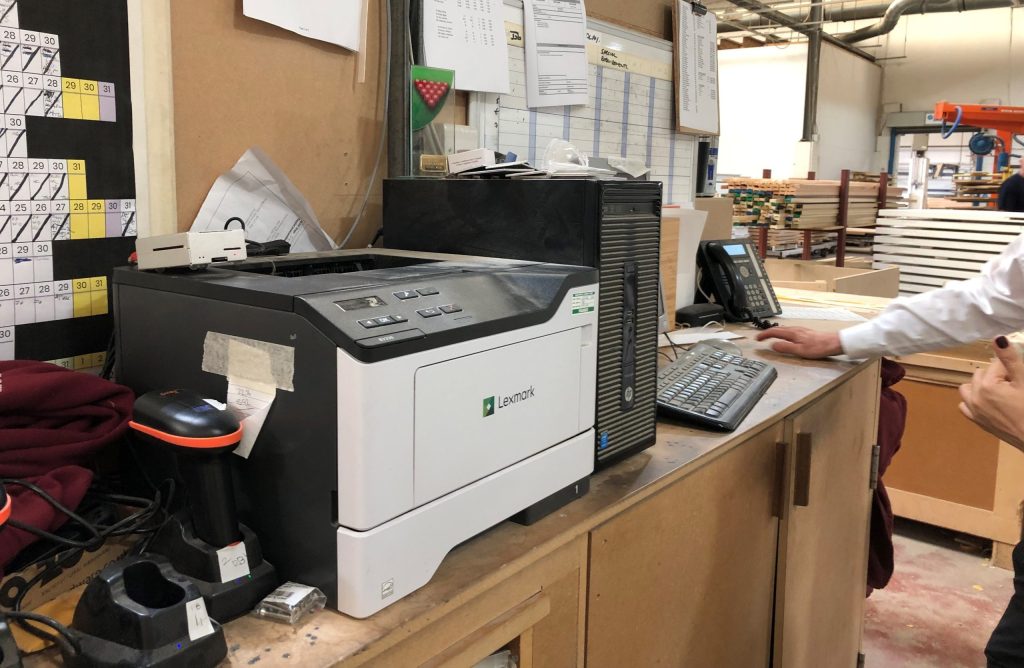Job tracking case study: David Smith
Shoestring has prompted us to change our systems where they were not right. We’ve learned how to specify a digital system, we have better understanding of what we need. And it has changed the way our employees work.”
Simon Wadsworth, Operations Director, David Smith
Job tracking solution helps construction manufacturer improve their systems
When the Operations Director at the St Ives based construction manufacturer, David Smith, met Shoestring, the company had been searching for ways to start digitalising their processes for over 10 years, but were unsure of where to start. The family-owned joinery business supply a range of bespoke structural and architectural timber products, such as bespoke staircases, architectural doorsets, floor joists and roof trusses. As the business expanded they realised they needed to improve the way they managed their increasing production activity. They knew digitalisation was the way forward but they didn’t know where to start.
As Simon Wadsworth, the Operations Director, explained, “We had looked at barcoding two to three times over the last 15 years but never got anywhere.” The problem was that they couldn’t find a solution that did everything they wanted, and they then realised that they didn’t really know what they wanted. Shoestring helped changed this.
The business challenge
During Shoestring’s workshop the David Smith team identified their top business priority – to know the production status of doors across the shop floor at any one time. With health and safety considerations paramount for fire doors, job tracking could also play a key part in recording the provenance of each step in every door’s manufacturing process. Additionally much time was wasted each week chasing down the status of jobs on the shop floor.


The solution
To keep it simple when they started, job tracking was set up initially at the first and last workstation for the door manufacturing process as well as at the packing location. Using a different bar code scanner at each location, the doors were scanned as they came off the first production line, scanned again as they went through the final process when the door frame was built, and then scanned when they were packaged.
One of the key set up challenges was how to win over all the assembly station operators to the system, who couldn’t see the benefit to them of adding an extra task – scanning the job’s barcode – to their work load. Choosing a workstation where the operator would see immediate benefit helped demonstrate how much time employees could save if they didn’t have to fill out manual forms. In the case of the operator in the packing station the time saving was quickly realised as the digital solution removed his need to complete long forms for each job, manually recording every door in production.
Data from the scanners were transmitted to a central microcomputer, Raspberry Pi, set up on the shop floor. A monitor, connected to the Raspberry Pi, displayed a dashboard showing the progress of every job. This gave the company much more visibility of what is happening on the shop floor at any one time. It has also helped them improve their systems so that they can track jobs more effectively going forward.
Simon Wadsworth gives a live report from the factory on how Shoestring has helped David Smith get started, advising companies to ‘start small, start simply’
The outcomes
Initially deployed by the Operations Director, Simon Wadsworth, with remote support from the Shoestring research team, the system was soon adopted by the production team who use it all the time to keep track of all the product. The Production Coordinator, Joshua Brown, improved the system by converting the data collected into excel so he could visually display the results needed, enabling quick communication to colleagues.
A year later the system is still in use, expanded across two more workstations, one of which was included following the trial of a second solution – Digital job cards. The operator on one of the CNC machines now scans a barcode to access instructions for each job, which in turn updates the job tracking system.
The job tracking solution has helped reduce paper waste, improved customer relations, improved delivery targets and helped track quality control – saving time and money across the board. Joshua Brown observes:
By having real time overview of where products are along the production line makes it easier to give a customer a closer and more accurate delivery date.
Time has been saved in the packing area. Manual checklists have been cut down, which effectively has saved hours of work every week when big jobs are being prepared for delivery."
The team is also better equipped to deal with customer queries about whether doors have been sent to site. Joshua Brown explains, “This has been where the time stamp of a door being scanned onto a specific pallet, at an exact position on that pallet, has been vital to us proving that doors were packed and certain damage could not have occurred in the factory or during transit.”
It is also possible to track the production status of all the doors and ensure that only complete jobs are dispatched, “rather than sending part jobs as had previously happened due to lack of knowledge of what is going to be ready”.
A cultural shift has started to happen, with staff looking at how digitalisation can change their work environment. The Shoestring job tracking solution has sparked employees to assess how they can improve systems and where more information can be captured and shared effectively. In response to the job tracking, the person in charge of the store room rigged up a camera on the shop floor so that he could see when supplies were running low and needed replacing.
Next steps
Having expanded their first solution – job tracking – across more work stations, and adding a work station by trialling a second solution – Digital job cards – the Shoestring approach has given employees a hands on way to learn how digitalisation can benefit the company.
Recently bought out by Wyckham Blackwell and the Keystone Group, the David Smith team are waiting to see what processes will be introduced on their site by their more technically experienced parent company. However the team are already preparing a spec for a more robust system to monitor, track and plan their work more efficiently using the lessons learnt from Shoestring. The Production Coordinator has not only created a long list of suggested system improvements but has also realised ways to improve staff training and buy in to the system.
Case study summary: David Smith
Solution setup:
- Solution: job tracking system to monitor fire door production
- Deployed: across 4 workstations on the fire door assembly production line
- Technology used: 1 Raspberry Pi 4.0, 4 barcode scanners, HTML dashboard
- Technology cost: £180
- Time taken to deploy: 3 months from initial trial setup
Key outcomes:
- Improved efficiency: spotted and corrected barcode problems on the shop floor
- Better customer service: easier to give customers a more accurate delivery date; able to ensure jobs are delivered only when complete
- Saves time and waste: saves time in packing area, less paper wastage
- Improved communication with team leaders to help jobs move through stages led to adaption and improvement of existing spreadsheets to give overall configurable views of shop floor production
Next steps:
- Deployed a second solution on a trial basis – digital job cards – but concluded very slight modifications to the Tracking system gave an acceptable solution
- Specifying a commercial solution
